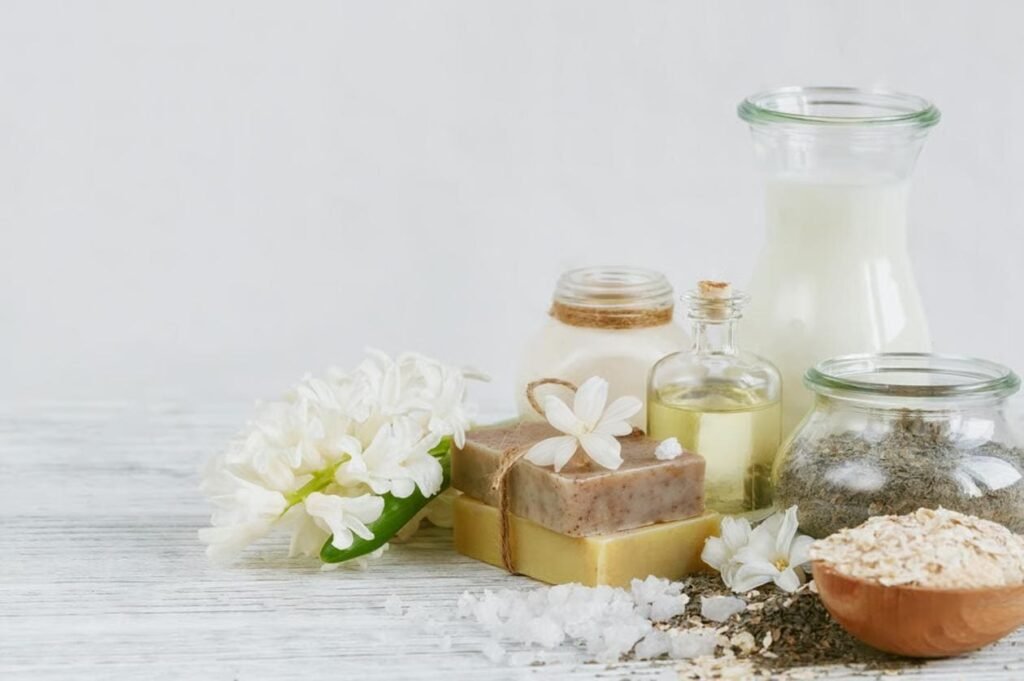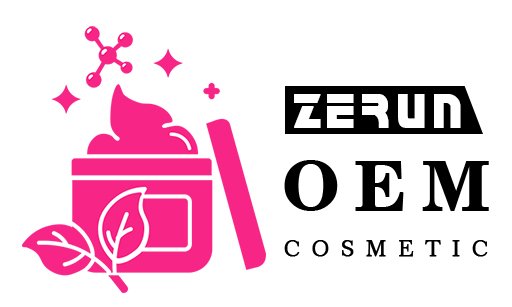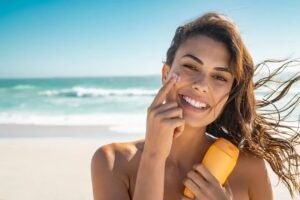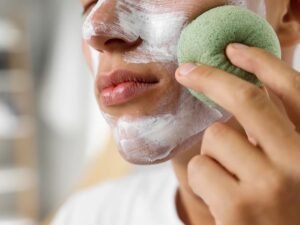Dry skin isn’t just “tightness”—it’s a complex mix of low water content, impaired lipids, and a hypersensitive barrier. Classic astringent toners made things worse; modern toners can do the opposite.
The best toners for dry skin are alcohol-free, mildly acidic (pH ~4.5–5.5), and loaded with humectants (glycerin, hyaluronic acid, PCA, urea), plus barrier-supporting lipids (ceramides, cholesterol, fatty acids) and soothing agents (panthenol, oat, allantoin). They hydrate immediately, reduce transepidermal water loss, and prep skin to absorb serums and creams—without stinging or stripping. Ready to build a routine that actually feels comfortable?
Should I use a toner if I have dry skin?
Yes—if it’s a hydrating, alcohol-free toner formulated at a skin-friendly pH and built around humectants + barrier helpers. Modern toners act like a pre-serum hydration layer, softening the stratum corneum so later products spread better and absorb evenly. Avoid astringent or heavy-fragrance toners that spike irritation and increase water loss.
What a modern “toner” really is
Today’s hydrating toners behave like watery moisturizers: they deliver fast-absorbing humectants (glycerin, HA, PCA) and often low-level lipids or film formers that slow evaporation. They can replace a separate essence step in minimalist routines.
The barrier-first lens
Dry skin often has elevated TEWL and disorganized intercellular lipids. A good toner doesn’t fix everything, but it primes the barrier for richer creams by softening corneocytes (better spreadability) and balancing pH (better enzyme function for lipid processing).
Who benefits most
- Tight, flaky skins that pill with thick creams—adding a thin hydration step first reduces drag.
- Cold or very dry climates—stacking light hydration layers is more comfortable than single heavy occlusion.
- Retinoid or acid users—a soothing, humectant-rich toner offsets dryness without cancelling results.
Red flags to avoid
- High ethanol/denat. alcohol as a primary solvent.
- Astringent botanicals used at astringency levels (witch hazel distillates with added alcohol).
- Stripping surfactants in “toner waters” designed to clean rather than hydrate.
Toner Benefits for Dry Skin (At-A-Glance)
| Goal | What a good toner does | What to look for | What to avoid |
|---|---|---|---|
| Immediate comfort | Adds fast water + slip | Glycerin, multi-weight HA, PCA | High alcohol, menthol |
| Barrier support | Reduces TEWL indirectly | Panthenol, ceramides, beta-glucan | Harsh astringents |
| Better layering | Improves spread, reduces pilling | Low-viscosity, slightly viscous gels | Sticky formulas overloaded with gums |
| pH balance | Supports acid mantle enzymes | pH 4.5–5.5 | Alkaline waters (≥6.5) |
Which type of toner is best for dry skin?
Choose hydrating toners (essence-like waters or light gels) featuring humectant stacks (glycerin + HA + PCA/urea) and soothing co-actives (panthenol, oat, allantoin). Lamellar microemulsion toners and oil-in-water milk toners add a tiny lipid phase for longer comfort. Skip astringent or exfoliating toners until the barrier feels stable.
Hydrating water toners (essence-style)
Ultra-light, quick to absorb, and easy to layer. Ideal when you dislike residue. Pair with a richer moisturizer.
Gel-toners (slightly viscous)
Contain film formers (e.g., pullulan) or polymers that slow evaporation. Great for indoor heating/AC seasons when water loss is fast.
Milk toners / microemulsion toners
A minimal lipid phase (squalane, light esters) helps reduce tightness immediately without the weight of a cream. Especially good AM under sunscreen.
Mineral-rich thermal waters (plus humectants)
By themselves they evaporate and can dehydrate. With added humectants they soothe without that tight afterfeel.
Which textures fit which scenario?
| Scenario | Best toner type | Why it wins |
|---|---|---|
| Layering under many actives | Hydrating water toner | Keeps routine light; no pilling |
| Extreme dryness / heaters on | Gel-toner | Gentle film slows water loss |
| AM under makeup | Milk/microemulsion toner | Adds slip; smoother foundation |
| Toner-only minimalists | Gel or milk toner | More standalone comfort |

Which humectants actually hydrate best?
The best toners for dry skin layer multiple humectants: glycerin (3–10%) for reliable hydration, multi-weight hyaluronic acid for surface + shallow layers, sodium PCA and amino acids to mimic NMF, and urea (2–5%) for hydration plus gentle smoothing. Blends outperform single-ingredient toners and feel less sticky when balanced with lightweight emollients.
Why blends are better
Different humectants bind water differently and occupy different microenvironments. Combining glycerin + HA (HMW/LMW) + PCA/amino acids creates broader, more stable hydration with less tack.
The role of urea
At 2–5%, urea is strongly humectant and softens micro-flakes (keratolysis at higher ranges). In toners it boosts smoothness without aggression.
Hyaluronic acid—choose weights, not hype
- HMW HA: surface hydration, slip, “plump” look.
- LMW HA: penetrates a bit deeper; overuse can feel tight if not balanced with emollients.
- Crosspolymer HA: forms breathable film; great for makeup grip.
Glycerin’s PR problem
People fear stickiness, but correctly dosed glycerin is unmatched for TEWL reduction synergy. Formulators offset tack with small emollient or volatile carriers and smart polymer systems.
NMF mimics
Sodium PCA, amino acids, and lactates approximate skin’s natural moisturizing factors, improving elasticity cues in panel tests.
Humectant Shortlist & Typical Toner Levels
| Humectant | Typical level in toners | Key benefit | Formulation note |
|---|---|---|---|
| Glycerin | 3–10% | Gold-standard hydration, TEWL synergy | Balance tack with emollients/polymers |
| Hyaluronic acid (HMW/LMW/crosspolymer) | 0.05–0.3% total | Multi-layer moisture + film | Blend weights for feel + performance |
| Sodium PCA | 0.2–1% | NMF mimic, elasticity | pH-friendly; pairs with amino acids |
| Urea | 2–5% | Hydration + gentle smoothing | Avoid high levels if stinging-prone |
| Betaine | 0.5–3% | Osmolyte, comfort | Nice for retinoid routines |
Formulation myth-busting
- “More HA = better”: Overconcentration can feel tight/sticky; use balanced stacks.
- “Glycerin is cheap so it’s bad”: It’s cheap and incredibly effective; elegance depends on the system around it.
How do lipids and soothing agents help?
Dry skin lacks not only water but organized lipids. Toners that micro-dose ceramides, cholesterol, and fatty acids (or use lamellar tech) help prep the barrier for creams. Panthenol, beta-glucan, colloidal oat, and allantoin calm reactivity and reduce sting, making actives and sunscreen easier to tolerate daily.
Why lipids matter—even in a watery step
A toner won’t replace a cream, but micro-emulsified lipids can reduce friction, add immediate suppleness, and support lamellar order over time when used twice daily.
Ceramides in toners?
Yes—at low percentages alongside cholesterol + long-chain fatty acids. Look for Ceramide NP/EOP in INCI lists, ideally with a compatible emulsification system.
Soothers with receipts
- Panthenol (1–3%): reduces erythema, improves feel.
- Beta-glucan (0.2–1%): film-forming comfort, perceived smoothness.
- Colloidal oatmeal (0.5–1%): itch relief, calm-on-contact vibe.
- Allantoin (0.2–0.5%): classic comfort, supports micro-injury repair.
Antioxidants that pull their weight
Niacinamide (2–4%) in toners can boost ceramide synthesis and even tone; keep pH in the sweet spot and avoid stacking too many potential irritants at once.
Milk toners vs. adding a separate oil
Milk toners offer uniform micro-lipid dispersion, often feeling less greasy and more stable than dropping oils onto damp skin—which can over-occlude or separate under sunscreen.
Soothing & Lipid Aids for Dry-Skin Toners
| Function | Ingredient | Typical level | Why it helps dry skin |
|---|---|---|---|
| Soothing | Panthenol | 1–3% | Reduces redness; immediate comfort |
| Soothing/film | Beta-glucan | 0.2–1% | Cushions feel; soft, flexible film |
| Soothing | Colloidal oatmeal | 0.5–1% | Calms itch/prickle sensations |
| Soothing | Allantoin | 0.2–0.5% | Micro-repair support; classic comfort |
| Lipid support | Ceramide NP/EOP + cholesterol + FA | 0.1–1% ceramide total | Helps lamellar order; better cream synergy |
| Light emollient | Squalane/esters | 0.5–3% | Reduces drag; makeup-friendly slip |

Is alcohol-free always better for dry skin toners?
Practically, yes—for dry skin. High levels of ethanol/denat. alcohol increase evaporation and can spike irritation, defeating the purpose of a hydrating toner. Tiny, incidental amounts (e.g., from plant extracts) are usually fine. Prioritize systems that deliver water-binding humectants and soothing agents without the sting or rapid dry-down.
Why ethanol worked in old-school toners—and why it’s a mismatch now
Alcohol boosted quick dry-down and astringency, useful for oily skins or heavy residue removal. For dry skin, that rapid evaporation can pull water out, leaving you tighter minutes later.
Edge cases where alcohol appears
- Herbal distillates/extracts may use trace ethanol; typically negligible for feel and safety.
- Ultra-fine mists occasionally include a small fraction for “flash”; for dry-skin targets, most brands can formulate elegance without it.
Read the INCI like a pro
If you see Alcohol Denat. in the top 4–5 ingredients, assume a drying profile. If it’s far down the list, concentration is likely very low and may be functionally irrelevant.
Comfort-first formulation wins
Consumers with dry skin report higher repurchase intent when toners deliver immediate comfort without sting. Replacing alcohol with volatile silicones or low-odor esters (in milk toners) can create that “fresh” feel minus dehydration.
Alcohol Reality Check for Dry Skin
| Label cue | Likely meaning | Action for dry skin |
|---|---|---|
| “Alcohol-free” | No added ethanol/denat. alcohol | Good sign—evaluate humectants/lipids next |
| Alcohol Denat. in top 5 | High content, fast flash-off | Better avoid for consistently dry skin |
| Trace ethanol from extract | Incidental, minimal | Usually tolerable; judge full formula |
| Elegant dry-down claims | Could be volatile esters/silicones | Fine if hydration stack is strong |
How should you layer toner with serums, creams, and sunscreen?
For dry skin, layer from thinnest to thickest: cleanser → hydrating toner → water-based serum (HA/niacinamide) → emulsion/cream (ceramide–cholesterol–FA) → sunscreen AM or occlusive balm PM (optional). Apply toner to damp skin, press—don’t rub—then use 30–60 seconds between steps to reduce pilling and improve absorption.
The moisture “scaffold” concept
Think in three layers:
- Water capture (toner: humectants)
- Water distribution (serum: film formers + targeted actives)
- Water retention (cream: emollient/occlusive blend). Each tier supports the next; skipping the first can force creams to “work alone” and feel heavy.
Press vs. swipe
For very dry or reactive skin, pressing toner in with palms minimizes friction. Cotton pads are okay for lotion-type toners, but avoid vigorous rubbing that lifts micro-flakes and causes patchiness.
Timing and pilling control
- Wait 30–60 seconds after toner before serums.
- If makeup pills, reduce polymer-heavy layers or switch to a milk toner that adds slip without extra gum load.
AM and PM variations
- AM: Hydrating toner → light serum → lightweight ceramide emulsion → broad-spectrum SPF.
- PM (repair mode): Hydrating or milk toner → panthenol/HA serum → richer ceramide cream → optional thin occlusive layer on hotspots (cheeks, peri-oral).
Active stacking with sensitivity in mind
If you use retinoids or acids, place hydrating toner first, then your active, then buffer with a robust cream. On off-nights, keep it simple: toner + panthenol + ceramide cream.
Mist myths
Mists can help, but water-only mists evaporate fast. Either seal with a cream or choose a mist-toner with humectants and light emollients to prevent rebound dryness.

Do pH and buffering matter—and what range is ideal?
Yes—pH is crucial. For dry skin toners, aim pH 4.5–5.5 to support the acid mantle and enzymatic lipid processing. Proper buffering (e.g., citrate/lactate systems) keeps pH stable across shelf life and with typical tap-water residues. Alkaline toners can raise TEWL and increase sting from actives layered on top.
Why dry skin notices pH more
Dry or barrier-compromised skin has fewer lipid reserves and is more sensitive to enzyme shifts caused by pH drift. A mildly acidic toner helps maintain desquamation rhythm, improves lipid organization, and may decrease sting from subsequent products.
Buffering beats “set-and-forget”
A toner can test at 5.2 on day one and drift over time. Buffers keep it in range as temperature, oxygen ingress, and water quality vary. Consumer experience stays consistent, reducing returns and “my skin suddenly hates this” reviews.
Ingredient compatibility
- Niacinamide behaves well in this zone and plays nicely with HA, panthenol, and glycerin.
- Urea and PCA are comfortable in mildly acidic systems.
- Acid toners for exfoliation are best reserved for separate SKUs to avoid confusion and over-exfoliation in dry users.
Regional water realities
Hard water deposits can leave skin feeling squeaky—and alkaline. A pH-smart toner right after cleansing helps re-acidify the surface, improving comfort and prepping for serums.
Formulation guardrails (B2B)
- Target pH 4.8–5.2 for a hydrating toner with niacinamide/HA stacks.
- Validate real-time + accelerated stability and run in-use pH checks (consumer simulation) to confirm buffering works under daily conditions.

Practical Picks Matrix
Use this as a quick blueprint for matching best toners for dry skin profiles to real-life routines and retail claims—without creating sticky, heavy stacks.
| Need | Toner profile | Key stack | Pair with | Pro tip |
|---|---|---|---|---|
| Max hydration, zero tack | Water/gel toner | 5–7% glycerin + multi-weight HA + betaine | Lightweight ceramide gel-cream | Add 1–2 sprays midday under SPF if office air is dry |
| Cushion + comfort AM | Milk/microemulsion toner | 2% glycerin + 1% panthenol + 1% squalane | Silicone-friendly sunscreen | Milk toners reduce foundation drag and patchiness |
| Barrier rehab month | Gel toner (soothing) | 3% glycerin + 2% urea + beta-glucan + ceramides | Ceramide–cholesterol–FA cream | Keep actives minimal; reintroduce slowly in week 3 |
| Retinoid routine buffer | Water toner (no acids) | HA crosspolymer + panthenol | Retinal/retinol serum + rich cream | Toner first, retinoid second, then cream to buffer |
| Humid-climate minimalism | Lightweight water toner | 3–4% glycerin + PCA + amino acids | Thin emulsion + gel sunscreen | Skip occlusives nightly; spot-seal only where needed |
Mistakes to Avoid (Quick Fire)
- Using an exfoliating “toner” daily on already dry skin. Keep acids light (PHA/lactic) and infrequent.
- Chasing instant matte in dry skin—flash-dry feel can mean water loss.
- Layering too fast—pilling isn’t just annoying; it signals poor film formation and wasted actives.
- Ignoring packaging hygiene—fingering inside wide-mouth bottles contaminates formulas; prefer airless pumps or disc-top caps.
Brand & Formulation Notes (B2B Lens)
Texture engineering
- Balance glycerin with low-residue emollients (squalane/hemisqualane) and shear-thinning polymers to avoid stickiness.
- Use multi-weight HA sparingly; elegance comes from the system, not a single percentage.
Packaging
- Airless pumps for gel-toners; coated glass or PET for essences.
- Mist formats require microbiological risk control and valve compatibility checks.
Claims substantiation
- Primary: Corneometry (hydration at 30 min, 2 h, 8–24 h).
- Secondary: TEWL improvement over 2–4 weeks; self-perception scales for comfort, tightness, and makeup glide.
Regulatory tone
Keep claims cosmetic, not drug-like: “Supports the skin barrier,” “Helps reduce the feeling of tightness,” “Improves skin’s hydration levels.”
Conclusion
For dry skin, the “best toner” is alcohol-free, mildly acidic (pH 4.5–5.5), and built on humectant stacks (glycerin, multi-weight HA, PCA/urea) with soothers (panthenol, beta-glucan, oat) and micro-lipids (ceramides, squalane). Layer thinnest to thickest, press—don’t rub—and buffer strong actives with a ceramide cream. That’s how you turn tight, flaky days into calm, comfortable skin—consistently.
Zerun Cosmetic develops custom hydrating toners (essence waters, gel-toners, milk/microemulsion toners) with the right pH strategy, humectant balance, and feel engineering for your market. We support you with stability & compatibility testing, instrumental claims plans (corneometry/TEWL), and airless/mist packaging selection.
Tell us your target region, texture brief, price window, and launch date—we’ll prototype fast, refine with your feedback, and scale to GMP production with quality documentation.





